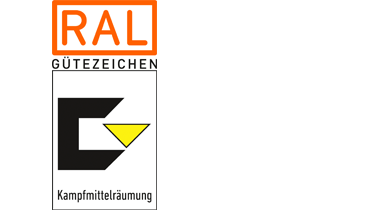Site clearance is often referred to as conventional site clearance, which simply means that the entire site is completely and systematically investigated and cleared manually. Using survey instruments, the site is first divided and pegged into squares of 50 m x 50 m. Survey lines are then marked out within each square in order to ensure that every inch of each square is systematically investigated.
A systematic surface survey is then carried out across the entire area of the clearance site using active/passive sensors. Localised foreign objects and identified explosive ordnance are then cleared, and it may also be necessary to perform subsurface investigations. Geophysical investigations may be performed in two stages. Following the use of active sensors to detect non-ferrous foreign objects, passive sensors are then used to detect ferrous objects. Localised artifacts are uncovered, identified and cleared in accordance with the general principles of procedure for UXO clearance, and in compliance with the provisions of DIN 4124 “Excavations and trenches – slopes, planking and strutting breadths of working spaces”. In the case of contractually agreed depth restrictions, further procedures must be agreed with the contracting party prior to clearance in the event that foreign objects are detected below the specified depth.
All foreign objects are documented and photographed for each square.
Because the degree of contamination is largely unknown prior to a conventional site clearance, our quotation is generally based on contamination categories as follows:
- Contamination with up to 0.3 targets / suspected UXOs per m²
- Contamination with 0.31 to 0.5 targets / UXOs per m²
- Contamination with 0.51 to 0.75 targets / UXOs per m²
- Contamination with 0.76 to 1 targets / UXOs per m²
- Contamination with 1.01 to 1.5 targets / UXOs per m²
The degree of contamination is determined by counting all the objects recovered in each square and dividing them by the surface area of the square, e.g. 1000 objects / 2500 m² = 0.4 targets /UXOs per m².
Conventional site clearance may also require the use of excavation equipment. All procedures must comply with the provisions of the BGI 833 safety guidelines.



